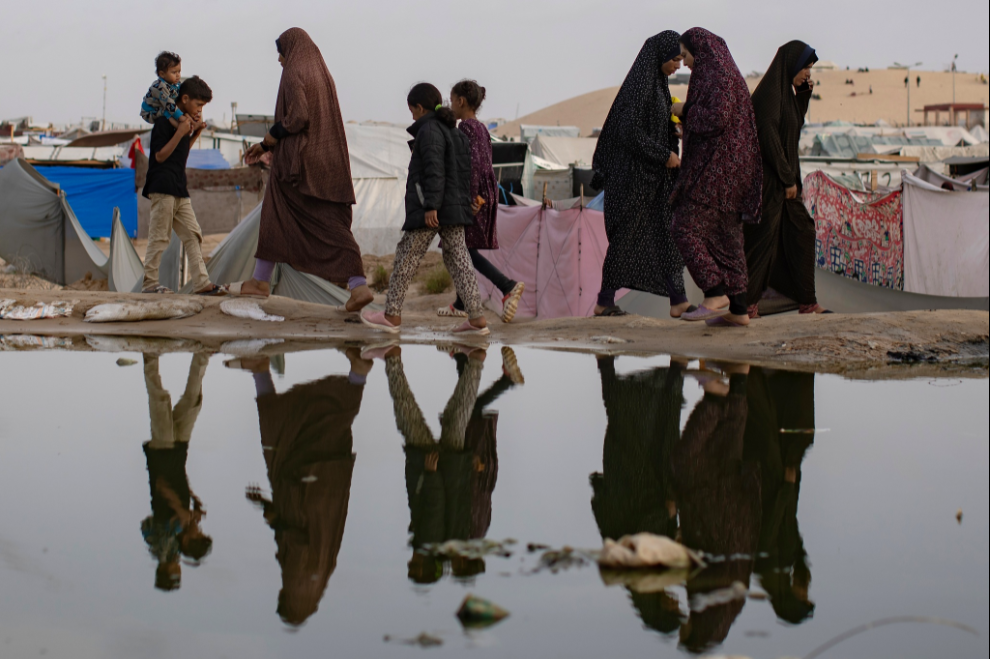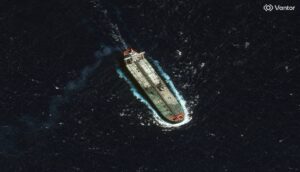
Published 06/05/2024 15:36 | Edited 06/05/2024 15:43
Half of Gaza’s population is at imminent risk of facing “death and starvation” in July, according to a joint report by the Food and Agriculture Organization of the United Nations (FAO) and the World Food Program (WFP). The document, which highlights the humanitarian crisis in the region, reveals that the North of the Gaza Strip may already be facing a situation of famine, as warned by the Famine Early Warning Systems Network (FEWS NET).
According to the report, up to 1.1 million people – half of Gaza’s population – are at risk of starving to death in the next month. This critical scenario is attributed to the “devastating impact of the ongoing conflict”, “restrictions on access and goods” and the “collapse of local agri-food systems”. FAO and WFP emphasize that the cessation of hostilities is essential to prevent the situation from worsening further.
FEWS NET, in its report released at the end of May, indicates that hunger may already be a reality in North Gaza. The independent organization estimates that more than 80% of the population in this area could be facing catastrophic hunger, even with increased access to food aid in March and April. Three main criteria for declaring famine – inadequate food consumption by more than 20% of the population, acute malnutrition in 15% or more of children under five years of age and an increased mortality rate – may already have been met.
Obstacles to the formal declaration of famine
The situation in southern Gaza is also deteriorating, especially due to the impacts of the Israeli offensive on Rafah. The report warns that this area could face a food “catastrophe” if there is a “sustained and large-scale disruption” of food aid.
Despite the worrying evidence, the formal declaration of a famine by the Famine Assessment Committee faces significant challenges. The military invasion and continuous bombings by Israel, which began in October last year, make it difficult to collect the data needed to officially confirm the famine in the region.
The FAO, WFP and FEWS NET reports converge on a crucial point: the urgent need to cease hostilities and ensure safe and continued access to food aid. Without a significant change in current conditions, the impact on the mortality and quality of life of Palestinians in Gaza, now and for future generations, will be devastating.
The international community is called upon to respond with urgency and determination to prevent an even greater humanitarian catastrophe in Gaza.
21 countries
The wider regional ramifications of the conflict in Gaza are exacerbating the already serious food security needs in Lebanon and Syria. The joint FAO and WFP report also estimates that food costs in Yemen are likely to increase in light of the crisis in the Red Sea, further worsening the situation in the region.
According to the report, the impact of conflicts on economic growth and geopolitical tensions in the Middle East and North Africa pose significant risks to the global economy. Forecasts indicate that Myanmar (formerly Burma), Syria, Lebanon and Yemen are areas of great concern due to the intensification of conflicts, which could result in more displacement and restrictions on access to food and humanitarian assistance.
Haiti has been added to the list of places requiring “very urgent attention”. The country is already facing a catastrophe or is at imminent risk of such a classification due to the escalation of violence. The increase in displacement and restricted access to food are serious threats to the Haitian population.
Meteorological Impacts
In addition to conflicts, extreme weather events such as excessive rainfall, tropical storms, cyclones, floods, droughts and increased climate variability are contributing to food insecurity. The La Niña phenomenon, predicted between August 2024 and February 2025, could improve agricultural prospects, but also increase the risk of flooding in African countries and Haiti.
FAO and WFP highlight the need for “urgent and reinforced assistance in 18 famine hotspots to protect livelihoods and increase access to food”. The report concludes that early intervention can reduce food shortages and protect assets and livelihoods at a lower cost than a delayed humanitarian response. He also defends “more investments in integrated solutions” to face the crisis.
Source: vermelho.org.br

